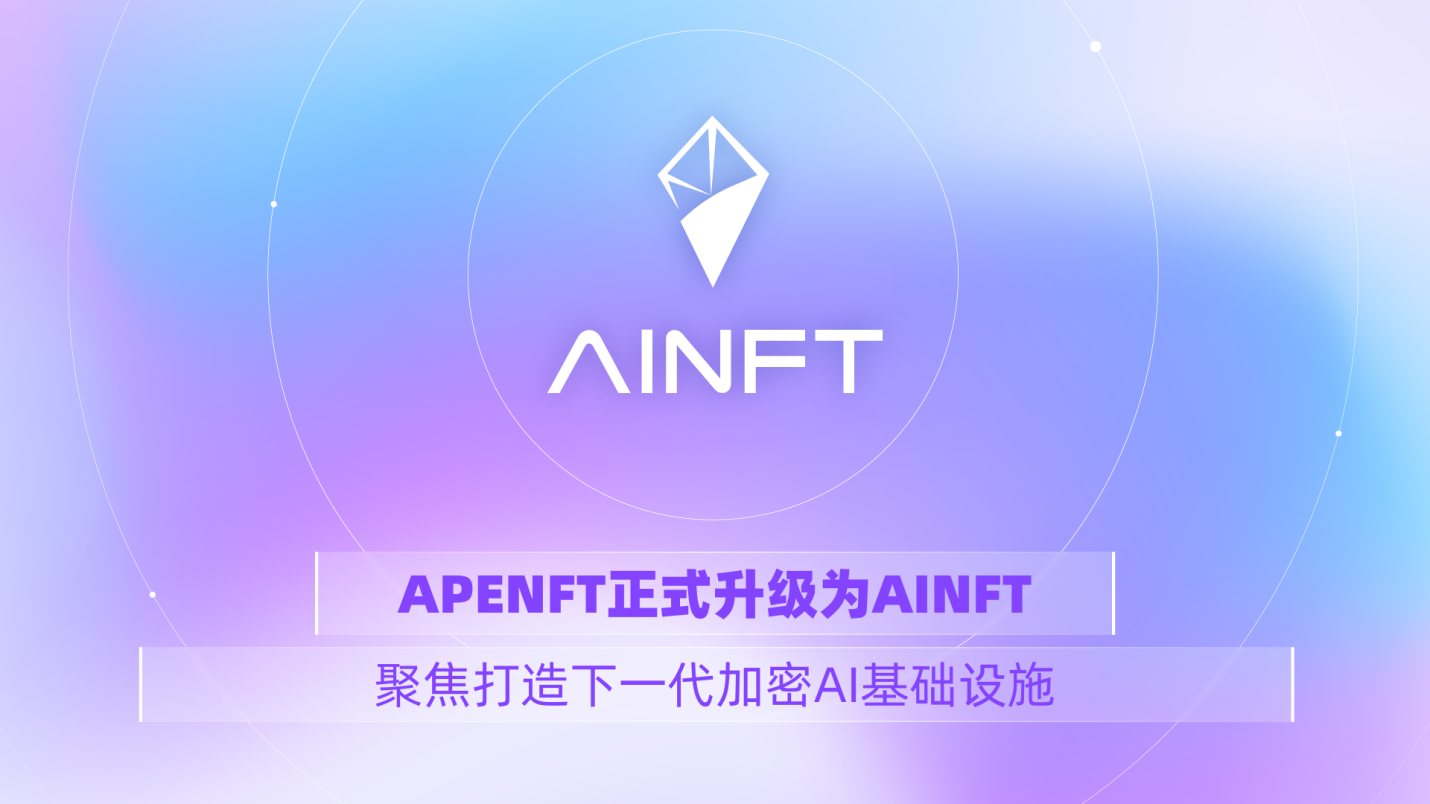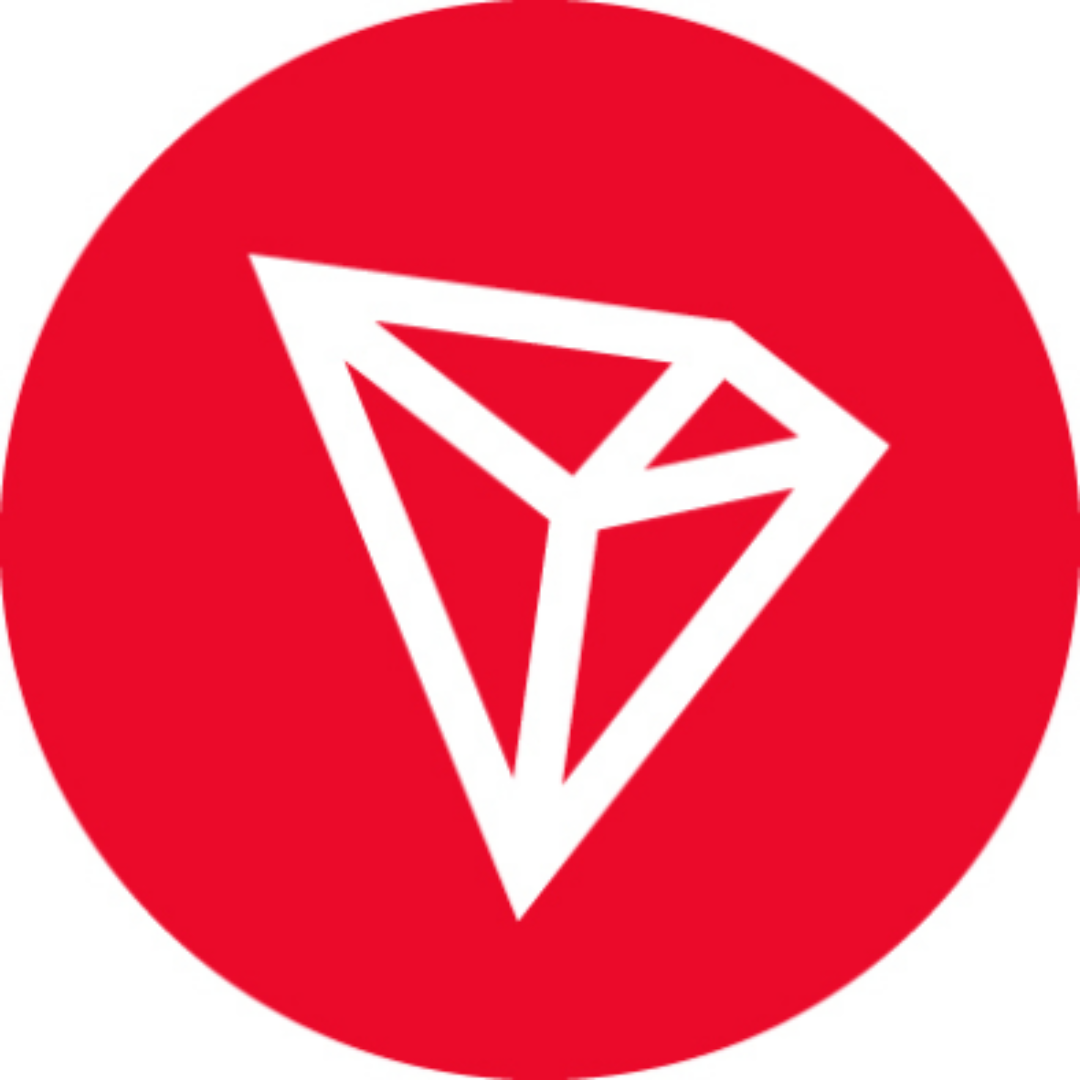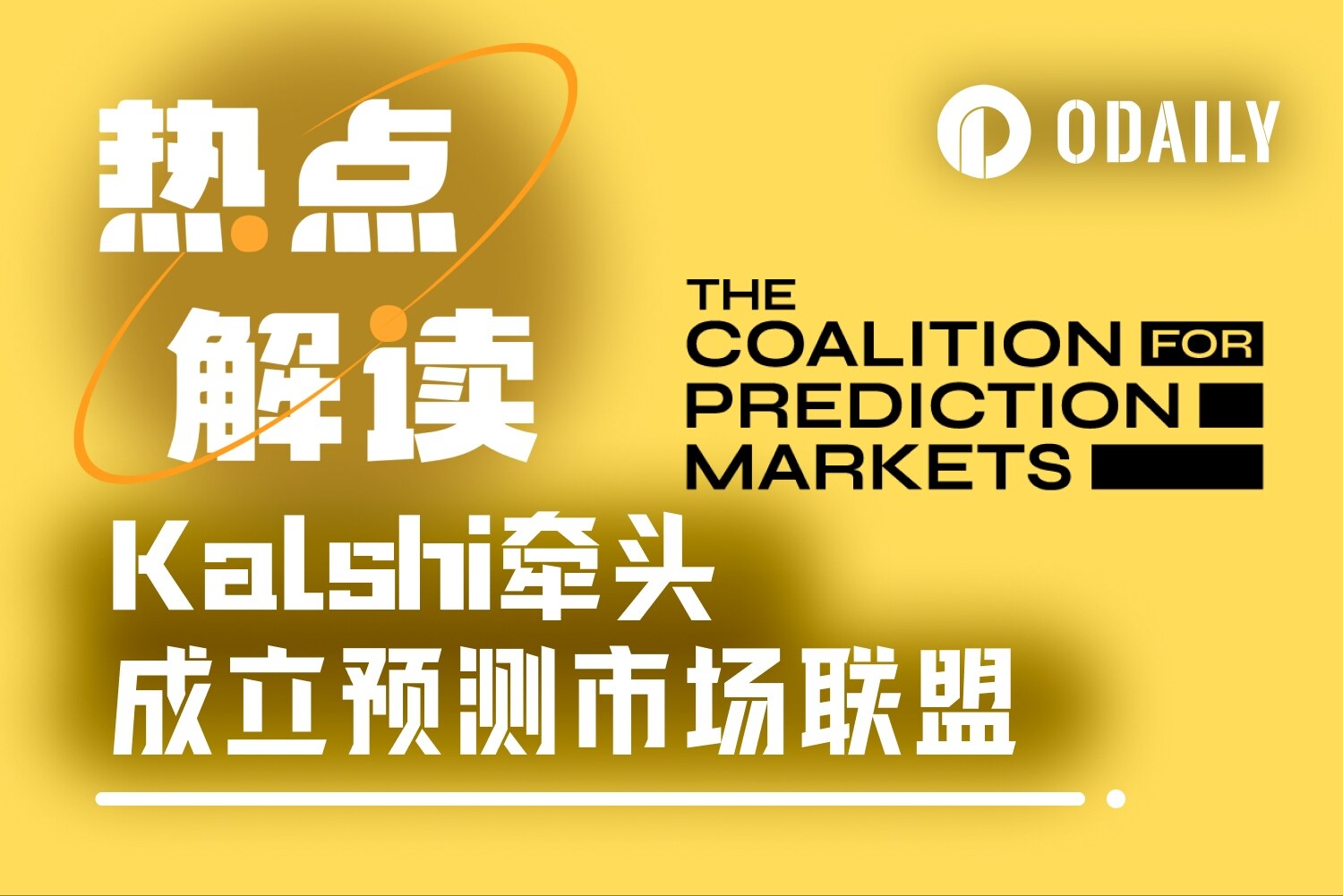APENFT upgrades to AINFT, focusing on building the next generation of encrypted AI infrastructure
- 核心观点:APENFT升级为AINFT,转型加密AI基础设施。
- 关键要素:
- 聚焦AI与区块链深度融合。
- 依托原有数百万用户基础。
- 构建四大AI产品线框架。
- 市场影响:推动波场生态向AI智能服务升级。
- 时效性标注:中期影响。
On October 9, APENFT, the largest NFT platform in the TRON ecosystem, officially announced a strategic upgrade of its brand, changing its name to "AINFT," and simultaneously released its latest strategic direction: from focusing on NFT transactions to fully devoting itself to the construction of encrypted AI infrastructure.
This upgrade is more than just a simple brand name change. AINFT will focus on the "deep integration of AI and blockchain," developing the AI infrastructure and innovative AI Agent application framework for the TRON ecosystem.
From APENFT to AINFT, a paradigm shift has officially begun, from an "on-chain art palace" to a "distributed AI industry foundation." This not only demonstrates AINFT's accurate assessment and practical implementation of the convergence of AI and Web 3, but also represents a key move in the TRON ecosystem's strategic layout in the "AI + Crypto" space.

APENFT upgrades AINFT's paradigm revolution: a stunning transformation from "NFT trading platform" to "encrypted AI infrastructure"
AINFT's strategic transformation is not a castle in the air, but is rooted in the hard-core strength that APENFT has accumulated in the NFT field over the past five years: a user base of millions, a mature digital asset ownership confirmation system, and market-proven on-chain operation experience. These accumulations will provide solid support for AINFT to upgrade its AI infrastructure.
Since its launch in 2021, APENFT has consistently focused on "reshaping art and digital collectibles with blockchain technology," building a comprehensive ecosystem encompassing digital asset issuance, title confirmation, trading, and incubation. Its core product, the APENFT Marketplace, is the largest NFT trading platform in the TRON ecosystem, supporting the circulation of over 2 million NFT assets on-chain and generating cumulative trading volume exceeding US$10 million. It remains the preferred and most active NFT trading platform on the TRON blockchain.
In terms of art collection, APENFT has established a heavyweight collection system spanning traditional classics and crypto art, covering top works such as Picasso's "Nude with a Necklace", Andy Warhol's "Three Self-Portraits", Beeple's "Ocean's Front", algorithmic artist Pak's "Cube", and Maurizio Cattelan's banana installation "Comedian", with an overall valuation of more than 200 million yuan. It has accumulated deep cultural capital for the brand and will also provide a reference paradigm for the "ownership confirmation and pricing" of AI-generated content.
APENFT has also continuously advanced technological innovation. By continuously expanding its business boundaries, APENFT has transcended the confines of a single NFT trading platform and developed into a digital asset ecosystem covering multiple scenarios. In addition to its core NFT trading platform (APENFT Marketplace), APENFT has also expanded into GameFi (on-chain game asset issuance and circulation), TRONscription asset deployment and trading, and NFT fair issuance and fragmented liquidity (NFTPump), establishing a comprehensive service offering encompassing the entire digital asset chain from issuance to title confirmation to circulation and value-added.
Today, APENFT has officially launched a comprehensive upgrade and transformation, and the new brand AINFT will focus on the construction of encrypted AI infrastructure.
AINFT opens a new paradigm of AI+Web 3 integration
Despite its remarkable achievements in the NFT field, the APENFT team did not stop there. With keen insight, they realized that under the wave of AI technology, the traditional NFT architecture has multiple limitations.
Traditional NFTs exhibit distinctly static characteristics, serving solely as proof of ownership and a tool for confirming ownership, lacking interactivity and the ability to evolve. In the AI era, the demand for dynamic interaction is growing stronger, and traditional NFTs are clearly out of step with this. It is foreseeable that future digital assets will go beyond mere proof of ownership and evolve into intelligent AI agents capable of interacting, learning, and creating.
At the same time, AI and blockchain face challenges when operating independently. AI faces the dilemmas of "data black box" and "unequal value distribution," resulting in opaque data usage and processing and uneven value distribution. Blockchain, on the other hand, lacks intelligent decision-making capabilities and struggles to cope with complex scenarios. These pain points were the core reason for APENFT's upgrade to AINFT.
AI and blockchain have naturally complementary characteristics, providing a path forward for breakthroughs. Web 3's core advantage lies in its decentralized blockchain architecture. Leveraging token economies, smart contracts, and distributed technologies, it not only precisely defines data ownership but also enhances business model efficiency through token incentives. This is the key to addressing the AI industry's pain points of data opacity and ambiguous value distribution. Conversely, AI technology can enhance the user experience and performance of crypto products, for example, by leveraging AI to automatically detect vulnerabilities in Web 3 project code or using AI agents to automate the management of crypto assets.
It is precisely because of the accurate insight into the deep complementary value of AI and blockchain that the APENFT team has decisively promoted strategic evolution: from an NFT trading platform to the construction of encrypted AI infrastructure, firmly believing that the integration of AI and blockchain will give birth to a new AI Agent intelligent ecosystem with automatic evolution capabilities.
The strategic transition from APENFT to AINFT reflects a precise grasp of and proactive response to technological trends and core user needs. It is no longer limited to the single proof-of-ownership function of NFT digital assets, but instead focuses on creating a new AI ecosystem for encrypted AI agents with autonomous interaction and learning capabilities to meet the new demands of the times.
The emergence of multimodal systems like Sora, which support the conversion of text into contextually rich videos, signals that AI has broken through the limitations of text-based unimodality. AINFT is committed to integrating external multimodal models like Sora into its decentralized AI ecosystem and integrating high-end AI generation capabilities into AINFT AI Agents. This will enable AI Agents to interpret unstructured data, simulate complex scenarios, and autonomously generate verifiable NFT digital assets and experiences, enabling the creation, tokenization, and monetization of AI Agents in an on-chain environment.
Justin Sun, founder of TRON, stated publicly at the beginning of the year that AI Agents will become an important trend in the future. These intelligent programs that can perform tasks autonomously are expected to play a key role in crypto asset management, trading decisions, and even DAO governance.
By deeply integrating the trusted foundation of blockchain with the intelligent vitality of AI, AINFT aims to create a new generation of crypto-AI digital ecosystem. Within this ecosystem, crypto-AI applications will not only efficiently handle complex cognitive tasks such as dynamic market analysis and multi-scenario decision-making, but also ensure fair distribution of value, propelling crypto-digital assets from "static proof of ownership" to a new era of "dynamic AI agents."
Build the core AI infrastructure of the TRON ecosystem
AINFT is committed to becoming the "core AI infrastructure + AI Agent innovative application framework" of the TRON ecosystem to support the large-scale deployment, model training, and asset issuance of AI agents, ultimately building a new generation of encrypted AI new economic ecosystem with autonomous AI agents, clear data ownership, and a self-circulating economic system.
This goal isn't simply a technological overlay; it's the deep integration of AI and blockchain achieved through "two-way empowerment." On the one hand, blockchain technology will address the AI industry's challenges of data credibility, computing power monopoly, and revenue distribution. On the other hand, AI will enhance blockchain's security, usability, and automation, truly unleashing the value of the "intelligence + trust" fusion.
To address the AI industry's pain points, such as unreliable data, computing power monopolies, and unfair profit sharing, AINFT will build a decentralized data, computing power, and model market based on TRON. This will return AI leadership to the community and create a shared AI economy. Data contributors, computing power providers, algorithm developers, and model users will all share the value created by AI fairly based on their contributions. Furthermore, by introducing AI technology, it will enable real-time on-chain security monitoring, automated smart contract auditing, and the use of AI agents to execute complex on-chain tasks with one click, significantly lowering the barrier to entry for users.
This integration of "AI + Web 3" will also propel the TRON ecosystem from "value delivery" to "intelligent services." To realize this vision, AINFT has planned four core product lines:
- AINFT Agent Framework (AI Agent Multi-Function Framework Toolbox): Provides developers with an AI Agent development framework that supports the rapid construction of AI Agent multi-agent collaborative applications.
- NFT Nova (AI Agent issuance platform): supports users to create AI Agents and supporting tokens with one click, and integrates them into mainstream social platforms such as Twitter.
- AINFT AgenTX (AI-driven DeFi trading framework): DeFi's AI trading infrastructure provides intelligent asset management solutions.
- AINFT Grid (decentralized AI model training platform): supports model training through a distributed computing network and distributes token rewards based on contribution.
These four business segments support each other and operate in synergy, together forming AINFT's full-stack AI infrastructure covering AI Agents from the underlying development framework to application creation, financial empowerment, and distributed AI model training.
In the token economic model, the liquidity and functional value of the entire chain, including training payment and computing power contribution rewards, have been significantly improved. AINFT will continue to use APENFT's native token NFT as the only governance token in the ecosystem, which means that the application scenarios of NFT tokens will be significantly expanded, extending from the original NFT ecosystem to AINFT's AI Agent calls and models.
In terms of product positioning, AINFT is committed to becoming a Web 3 native, privacy-first AI aggregation gateway. Unlike mainstream AI aggregation applications such as Poe or Perplexity, AINFT does not directly participate in mass market competition, but focuses on opening up new tracks and building a bridge connecting Web 3 and cutting-edge AI services.
As the core AI infrastructure of the TRON ecosystem, AINFT will comprehensively accelerate the intelligent development of the TRON ecosystem. With the large-scale deployment of AI agents, TRON will not only become an ideal environment for AI agent operation, but also, through deep integration with AI technology, comprehensively enhance the intelligence level of its core ecosystems, such as DeFi. This marks a significant step forward in TRON's evolution from a "value delivery network" to an "AI intelligent value network."
This is not only a deep integration of AI and Web 3 technologies, but also a structural upgrade for the next-generation digital economy. With the deployment of AI Agents and the economic prosperity of the model ecosystem, AINFT is expected to become an industry benchmark for the integration of "AI + Web 3," leading the world of crypto AI into a new era of greater openness, intelligence, and shared governance.



